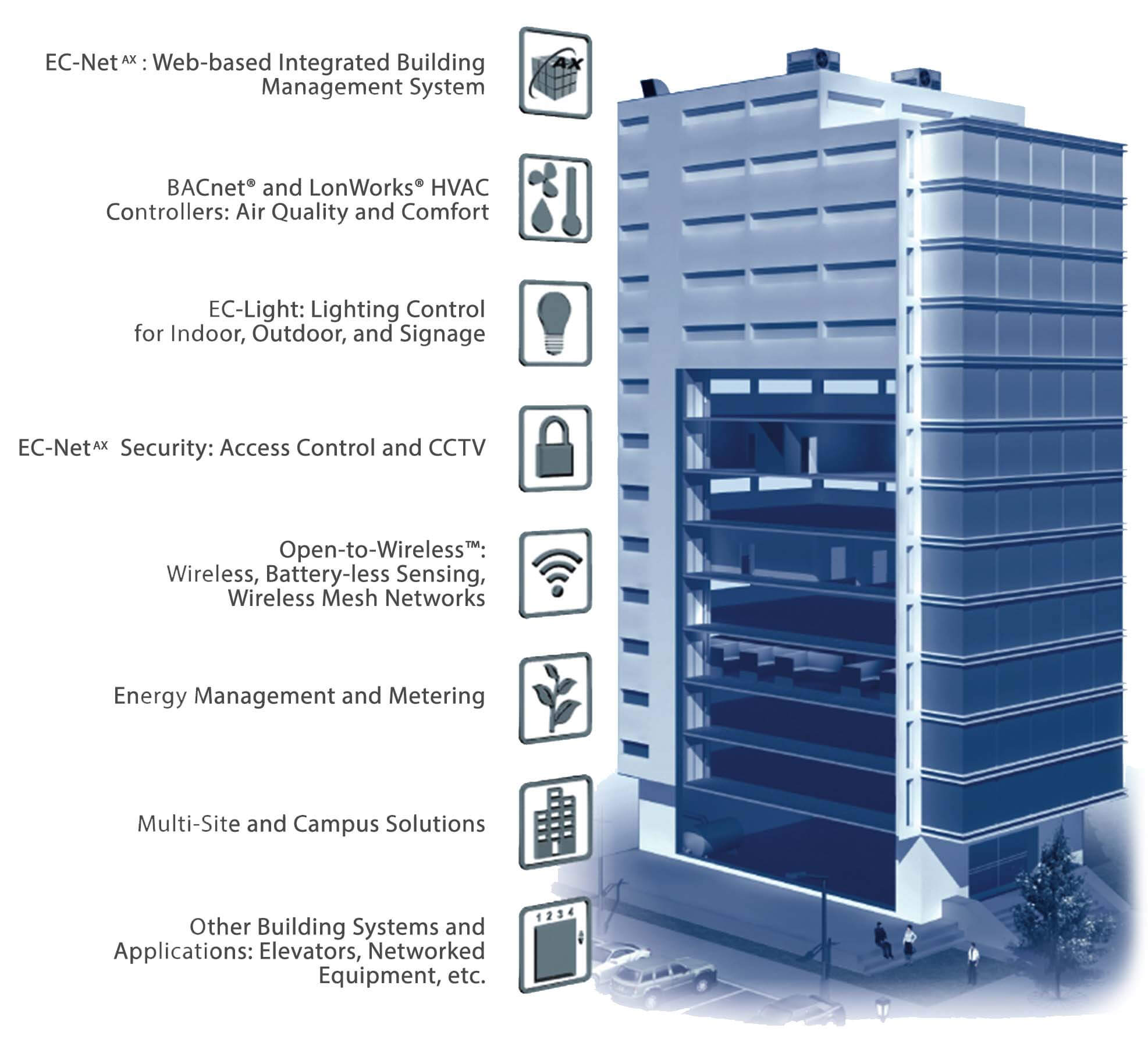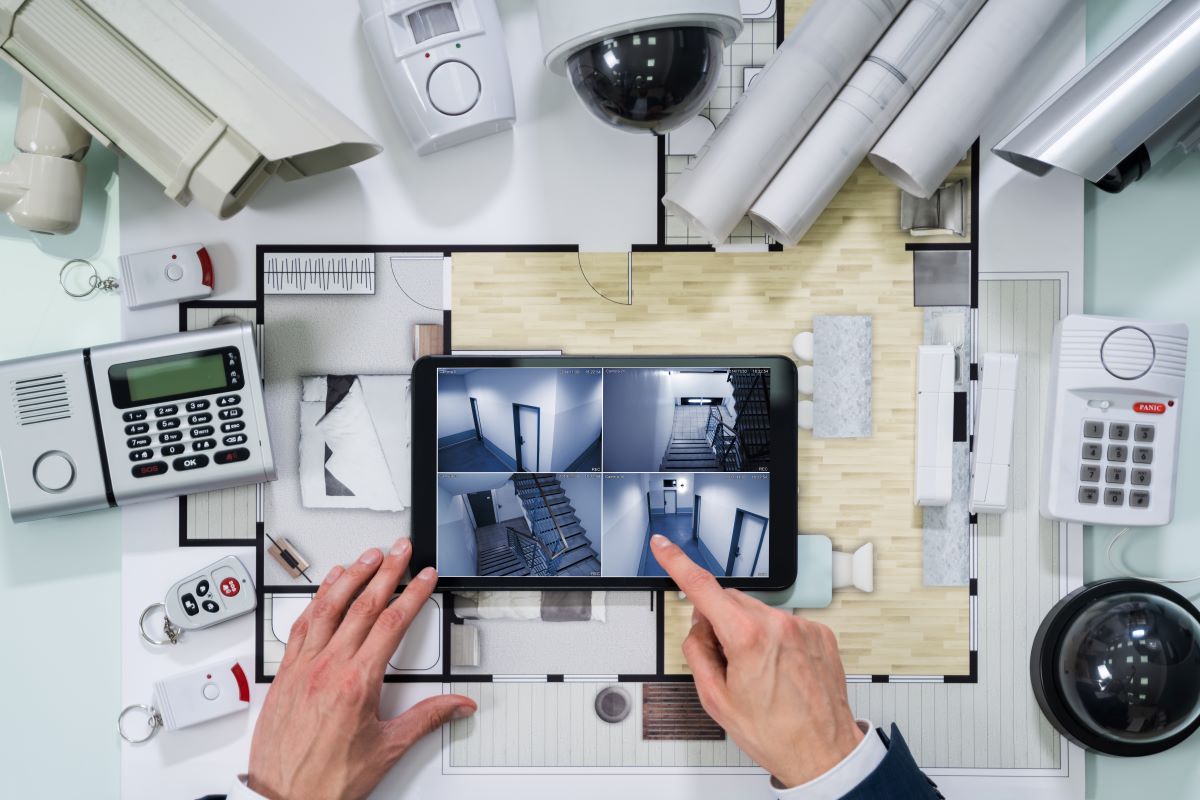Building Management Systems (BMS)
Intelligent Building Automation — Control, monitor, and optimize all critical services with AI-powered Building Management Systems.
Types of Building Management Systems

Integrated BMS
A centralized system that manages all building services from one interface.
- Integrates HVAC, Fire, Lighting, and Access systems
- Real-time monitoring and control across all utilities
- Custom dashboards for performance insights
- Ideal for commercial, industrial, and institutional complexes
HVAC Control Systems
Automation and optimization of heating, ventilation, and cooling systems.
- Temperature, humidity, and pressure monitoring
- Energy-efficient operation via sensor feedback
- Automated scheduling and occupancy-based control
- Reduces operational cost and enhances comfort

Lighting & Energy Management Systems
Smart lighting and power management for reduced energy consumption.
- Controls lighting intensity and schedules automatically
- Monitors power usage and load balancing
- Integrated daylight and occupancy sensors
- Saves up to 30% on energy costs

Security & Access Integration
Unified control for safety and restricted entry management.
- Combines CCTV, Access Control, and Intrusion Alarms
- Live event monitoring with audit trails
- Door, zone, and perimeter access control
- Integrated alarms and emergency response actions
Fire & Safety Integration Systems
Centralized monitoring for all fire detection and suppression systems.
- Monitors Fire Alarms, Hydrants, and Sprinklers
- Triggers emergency shutdowns and PA announcements
- Auto-alerts to fire departments and control rooms
- Ensures full compliance with NBC and NFPA standards

Utility Monitoring Systems
Tracks and controls essential building utilities and energy flow.
- Real-time water, gas, and power consumption monitoring
- Leakage detection and alerting
- Load management to prevent overuse
- Data logging for audits and sustainability tracking
Key Features of BMS
Centralized Control & Monitoring
- Manages multiple systems via a single control interface
- Real-time visualization of system performance
- Remote operation via web or mobile apps
Energy Efficiency & Cost Optimization
- Smart scheduling and demand-based equipment control
- Data analytics for energy consumption trends
- Helps achieve LEED & IGBC certification goals
Scalability & Flexibility
- Modular architecture allows system expansion
- Compatible with multiple OEM devices
- Suitable for both new and retrofit projects
Alarm & Event Management
- Real-time alerts for faults, breaches, or failures
- Prioritized alarm notifications with visual cues
- Historical log tracking for audits and analysis
User-Friendly Interface
- Intuitive dashboards with graphical representation
- Touchscreen and web-based control panels
- Multi-level user access and permissions
Integration Capability
- Supports BACnet, Modbus, KNX, LonWorks protocols
- Compatible with Fire, HVAC, Lighting, and Access Systems
- Cloud-based integration for IoT and analytics platforms
Remote Access & Automation
- Control building operations from anywhere
- Cloud dashboards and mobile application integration
- AI-based predictive maintenance and fault detection
Key Components of BMS
Controllers & DDC Panels
The brain of the BMS that processes inputs and executes automation commands.
- Direct Digital Controllers (DDC) for field-level management
- PLC-based logic controllers for process control
- Multiple I/O modules for equipment integration
- Real-time communication with the main server
Sensors & Field Devices
Capture real-time environmental and operational data for intelligent automation.
- Temperature, humidity, CO₂, pressure & occupancy sensors
- Smoke, motion, and light detectors
- Accurate data transmission to controllers
Communication Network
Ensures seamless data transmission between devices with high reliability.
- BACnet, Modbus, and Ethernet-based connectivity
- Wired or wireless data backbone
- Redundant architecture for reliability
Human Machine Interface (HMI) & Workstations
User interface for operators and facility managers to monitor and control systems.
- Touchscreen panels and desktop workstations
- Centralized dashboard for real-time monitoring
- Alarm visualization and trend reports
Software Platform
Core visualization and data management software built on SCADA or IoT.
- Real-time analytics, trends, and KPIs
- Customizable dashboards for different roles
Integration Gateways
Bridges different systems and protocols for unified control and monitoring.
- Connects Fire, HVAC, Access, Lighting, and CCTV systems
- Converts proprietary communication protocols
- Enables centralized monitoring via BMS server
Ready to Automate Your Building?
Contact us today for a free BMS consultation and system demo.